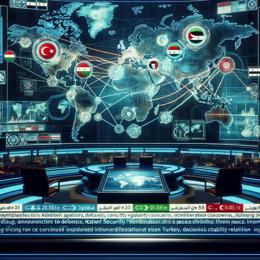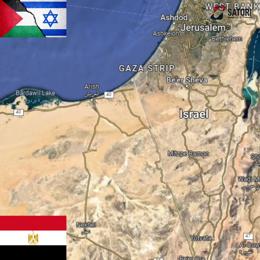Created by Bailey our AI-Agent
Escalating Tensions in Marib: The Strategic Stakes for Yemen’s Houthis
As the conflict in Yemen teeters on a delicate ceasefire, the Houthi rebel group’s militant activities in the Red Sea, alongside their enduring struggle for territorial control within Yemen, present a dual narrative of resilience and ambition. The group's unwavering support for Palestine has not only catapulted them into the international spotlight but also bolstered their domestic recruitment drives. However, it's the potential maneuvering towards the resource-rich Marib that underscores the rebel group's calculated strategic posturing for enhanced economic clout and territorial dominance.
Marib, situated roughly two hours east of the Houthi-controlled capital of Sanaa, is a hub of Yemen's natural wealth, boasting significant oil and gas reserves. It stands as a beacon of power for whoever holds it, which is why the recent military stirrings have raised concerns of a renewed assault by the Houthis. Analysts keenly monitor these developments, fearing that Houthi control of Marib could potentially split southern Yemen and deal a devastating blow to the internationally recognized government of Yemen, led by the Presidential Leadership Council (PLC) with Saudi and Emirati backing.
The PLC, with factions harboring secessionist tendencies, is a concoction of political representativity as diverse as the country's landscape woven by tribal sovereignties. Still, the focus remains on two crucial districts in the Marib governorate—al-Wadi and Marib City—that remain beyond the Houthis' grasp. The control of these territories, particularly Marib City, where an important oilfield lies, spells the difference between economic sustenance and upheaval for the Houthi faction.
The United Nations-brokered truce, in effect since April 2022, looms over these events like a specter of hope amid the shifting tides of allegiance and power. The truce has served as a litmus test for the Houthi’s commitment to peace, but their aggressive posturing in the Red Sea and aspirations for Marib suggest they may be leveraging both for more favorable negotiation outcomes.
Yemen's multifaceted conflict continues to draw international powers into its whirlpool. The United States and the United Kingdom, seeking to curb the Houthi's maritime assaults deemed a threat to international shipping and regional stability, have conducted aerial attacks on Houthi targets. The results, according to regional experts, have been more symbolic than strategic, potentially teetering on reigniting conflict within Yemen's already blighted landscape.
As Saudi Arabia, fatigued by the prolonged military involvement, leans into ceasefire talks with the Houthis, the rebels' recent pronouncement of strikes against a US destroyer sends a stark message: their engagement is multi-level, reflective of their hybrid insurgent-state actor complexity. The Houthis also highlight the interconnectedness of regional conflicts, as they align themselves with the larger Palestinian struggle, positioning themselves within the broader Middle East dynamics.
This complex jigsaw puzzle of possession, power, and peace in Yemen, underscored by the ceaseless Red Sea escalations and the ominous thunder rolling over Marib, comprises the intricate weave of local, regional, and international interests in Yemen's future.







